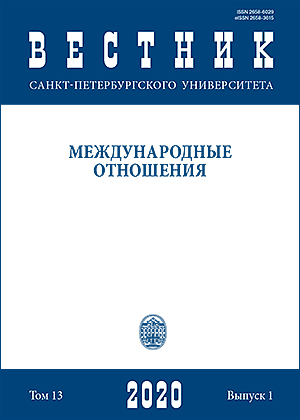Displacement and gendered violence in the Kashmir Valley: An analysis
DOI:
https://doi.org/10.21638/spbu06.2020.106Аннотация
In the global era, women, particularly in sub-continent are facing violence in every section of society. They are not only abused by partners and other family members, but they are treated as a different and marginalized sect of society. While talking about Kashmir, the escalation of political turmoil led to the displacement of minority communities, mainly the Kashmiri Hindus, from Kashmir. The weak democracy in Jammu and Kashmir and the majority-minority dynamics in the state led to the displacement of about three lakh persons (primarily Hindus) from the valley in 1989. It is more than two decades since the displacement of minorities from Kashmir, and their prolonged living in the new locations has resulted in social and cultural changes post-displacement. The shift to a new location has significance in analysing how the traditional structures and practices are redefined in the new locations. An atmosphere of fear and threat developed in Kashmir after the alleged rigging in the 1987 state assembly elections and this heightened the frustration of a large number of Kashmiri youth due to malpractices of the government. The women (non-Muslim) mostly faced coercion in the form of abuses during the 1990s. Abusive slogans were displayed on loudspeakers and the rape threats were clearly visible in the letter that was displayed on the street poles. The assessment of this paper is to highlight violence against women during the escalation of displacement and after displacing, how such women face the same gendered violence outside the state. The paper would be based on experiences and narratives of Kashmiri pundit women, who are residing in different migration camps outside Kashmir. The study is based on descriptive and empirical analysis of a problem that can be studied by applying the exploratory approach.
Ключевые слова:
Kashmiriyat, Kashmir conflict, internal displacement, gendered violence
Скачивания
Библиографические ссылки
Загрузки
Опубликован
Как цитировать
Выпуск
Раздел
Лицензия
Статьи журнала «Вестник Санкт-Петербургского университета. Международные отношения» находятся в открытом доступе и распространяются в соответствии с условиями Лицензионного Договора с Санкт-Петербургским государственным университетом, который бесплатно предоставляет авторам неограниченное распространение и самостоятельное архивирование.




